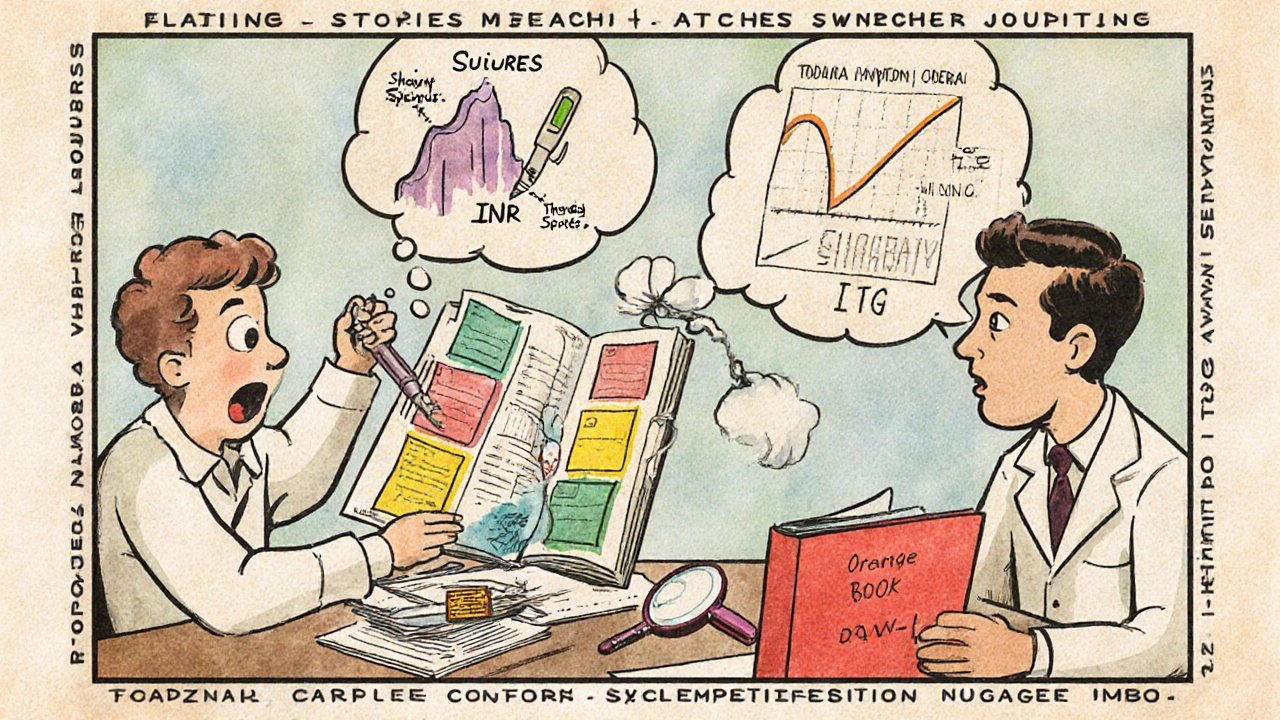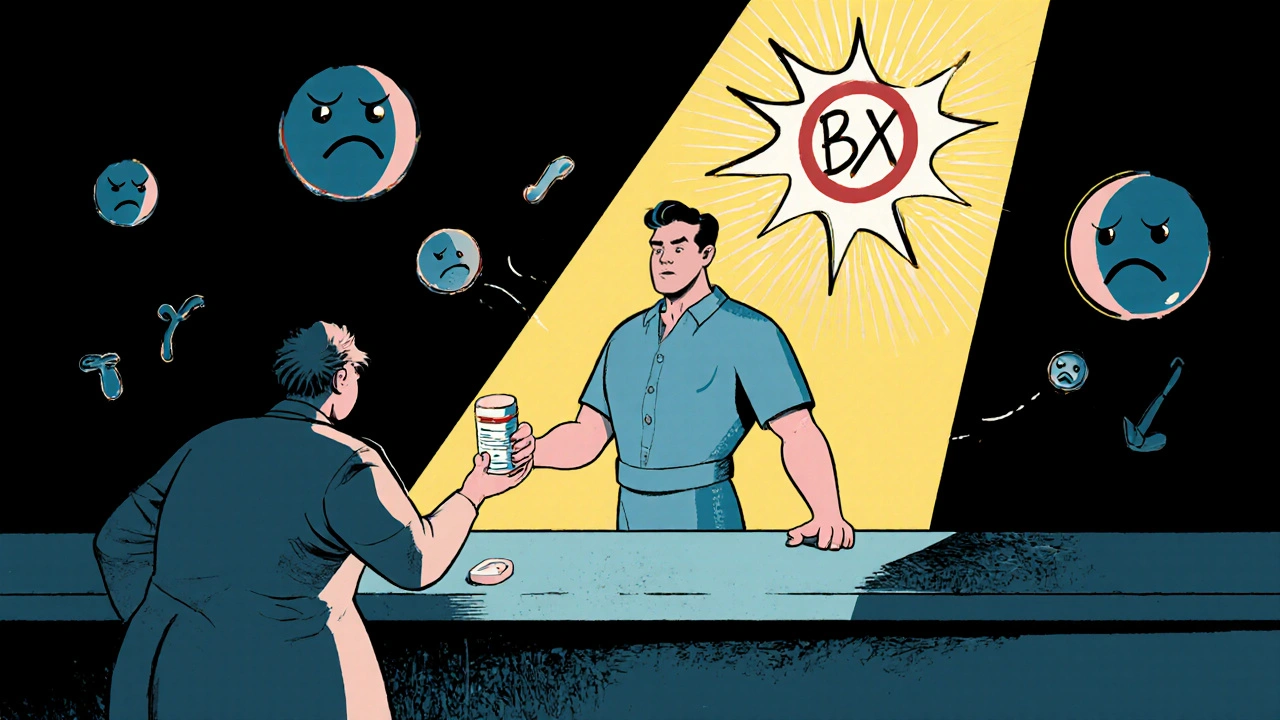How to Talk to Your Doctor About Staying on a Brand Medication When Generics Are Pushed
 Nov, 23 2025
Nov, 23 2025
Switching from a brand-name medication to a generic might seem like a simple cost-saving move - but for some people, it’s not just about money. It’s about safety, stability, and feeling in control of your health. If you’ve noticed changes after switching - worse side effects, loss of symptom control, or even new reactions - you’re not imagining it. And you’re not alone. Many patients face pressure to switch to generics, but you have the right to speak up and stay on what works for you.
Why Some People Need to Stay on Brand Medication
Not all medications are created equal, even when they contain the same active ingredient. The FDA says generics must be bioequivalent to brand-name drugs, meaning they deliver the same amount of active drug into your bloodstream. But there’s a catch: the acceptable range for bioequivalence is 80% to 125%. That’s a 45% window. For most drugs, that’s fine. But for medications where small changes in blood levels can cause big problems - like seizure drugs, blood thinners, thyroid hormones, or psychiatric medications - that margin matters. For example, if you’re on levothyroxine for hypothyroidism, even a slight drop in absorption can make your TSH levels spike, leaving you tired, depressed, or gaining weight. Studies show that switching between different generic versions of levothyroxine can cause measurable changes in thyroid function. The same is true for warfarin: patients who switch between generic brands have a 17% higher chance of ending up in the emergency room due to bleeding or clotting issues. And it’s not just about the active ingredient. Generics can use different fillers, dyes, or preservatives. If you’re allergic to lactose, gluten, or certain food dyes like FD&C Red No. 40, you might react to a generic version even though the active drug is the same. About 7% of patients report allergic or intolerant reactions to these inactive ingredients - and they often don’t realize it’s the filler, not the medicine, causing the problem.What to Say - and How to Say It
Talking to your doctor about staying on brand doesn’t mean arguing. It means showing up prepared. You’re not asking for special treatment. You’re asking for your health to be taken seriously. Start by documenting what happened. Write down:- The date you switched to the generic
- What symptoms changed - fatigue, anxiety, seizures, nausea, mood swings
- How bad they were on a scale of 1 to 10
- When they improved after going back to the brand
- Any lab results that show a shift - like INR levels for warfarin, TSH for thyroid meds, or drug levels for epilepsy drugs
“I was stable on the brand-name version for years. When I switched to the generic, I started having [specific symptom] within [timeframe]. My blood test on [date] showed [result], and when I went back to the brand, everything went back to normal. I’m not asking for an expensive option - I’m asking for what keeps me healthy.”
Use the SBAR method - it’s a tool doctors are trained to respond to:- Situation: “I’m here because I had a bad reaction after switching to the generic.”
- Background: “I’ve been on this medication for X years. I’ve never had issues until the generic.”
- Assessment: “I believe the change in formulation is causing this.”
- Recommendation: “Can we keep me on the brand, or try a different generic?”
Insurance and the Paperwork Hurdle
Here’s the hard part: your insurance probably doesn’t want to pay for the brand. Most plans require prior authorization - meaning your doctor has to prove it’s medically necessary. Don’t let that scare you. It’s a process, not a rejection. Your doctor can write “Dispense as Written” (DAW-1) on the prescription. That tells the pharmacy: “Don’t substitute. This is a medical necessity.” To help your doctor, bring:- Printouts of your lab results showing instability after switching
- Pharmacy records showing when you switched and when symptoms started
- A symptom journal with dates and severity
- Any FDA Orange Book info on your drug’s therapeutic equivalence rating

Know Your Rights and Resources
In New Zealand, pharmacists can substitute generics without your consent - but you can refuse. Tell the pharmacist: “I’ve had problems with this generic before. I need to stay on the brand.” They’re required to honor that. You can also check the FDA’s Orange Book (or New Zealand’s Medsafe equivalent) to see if your drug has any special therapeutic equivalence codes. Some drugs are flagged as “AB” (fully equivalent) while others are “BX” - meaning they’re not considered interchangeable. If yours is BX, you have stronger grounds to push back. If your insurer denies your request, you can appeal. Write a letter including:- Your name and policy number
- The drug name and why you need it
- Supporting documents (lab results, doctor’s note)
- A statement: “This is medically necessary for my health and safety.”
What Your Doctor Might Say - and How to Respond
Some doctors will say: “Generics are just as good. The FDA says so.” That’s true - for most people. But not for everyone. Respond with: “I understand generics work for most people. But I’m not most people. I’ve had a real, documented reaction. Can we try one more time with the brand - just to see if it makes a difference?” Others might say: “I don’t have time for this paperwork.” Say: “I’ll bring you everything you need - lab results, dates, symptoms. I just need you to sign off on it. This isn’t about cost - it’s about safety.” And if they still refuse? Ask for a referral to a specialist - an endocrinologist, neurologist, or psychiatrist - who’s more familiar with these issues. Many specialists routinely prescribe brand-name drugs for patients with narrow therapeutic index conditions.
Real Stories, Real Results
One patient in Wellington switched from brand-name Keppra to a generic and had three seizures in two months - something she hadn’t had in five years. After switching back, her seizures stopped. She brought her seizure diary and EEG results to her neurologist. They wrote a DAW-1 prescription. Her insurer approved it on appeal. Another man on warfarin noticed his INR levels swinging wildly after switching generics. He kept a daily log and showed his doctor the chart. His doctor called the pharmacy and insisted on the brand. His INR stabilized within weeks. These aren’t rare cases. Studies show 29% of patients avoid generics because of past negative experiences. Your experience matters.What to Do Next
If you’re on a brand-name drug and worried about being switched:- Check your current prescription - does it say “Dispense as Written” or “DAW-1”? If not, ask your doctor to add it.
- Start a simple journal: date, medication, symptoms, lab results.
- Look up your drug on Medsafe’s website to see if it has any substitution restrictions.
- Call your pharmacy and ask: “Is this a brand or generic?” Write it down.
- Bring all this to your next appointment - even if you’re not scheduled to see your doctor soon. Ask for a quick consult.
Can I legally refuse a generic substitution?
Yes. In New Zealand, pharmacists can substitute generics without your consent - but you can refuse at the counter. Simply say, “I need to stay on the brand-name version for medical reasons.” The pharmacist must honor your request. You can also ask your doctor to write “Dispense as Written” (DAW-1) on your prescription, which legally prevents substitution.
Are brand-name drugs really better than generics?
For most medications, generics are just as safe and effective. But for drugs with a narrow therapeutic index - like levothyroxine, warfarin, phenytoin, or certain antidepressants - small differences in absorption or inactive ingredients can lead to real clinical problems. Studies show increased seizure risk, unstable blood levels, and more ER visits after switching. If you’ve had a negative experience, it’s not in your head.
What if my doctor won’t support me?
If your doctor dismisses your concerns, ask for a referral to a specialist - like an endocrinologist, neurologist, or psychiatrist - who has more experience with medication stability. You can also request a second opinion. Your health matters more than administrative convenience. Bring your symptom log and lab results to reinforce your case.
How do I find out if my drug has a generic version?
Check Medsafe’s website (New Zealand’s medicines regulator) or ask your pharmacist. You can also search your drug name in the FDA’s Orange Book (if you have access) or use online tools like Drugs.com. Look for the “Therapeutic Equivalence Code.” If it’s “BX,” it’s not considered interchangeable - which gives you stronger grounds to stay on brand.
Will staying on brand cost me more?
It might, but you can appeal. Most insurance plans require prior authorization for brand-name drugs when generics exist. If you provide documented medical evidence - lab results, symptom logs, doctor’s notes - 72% of denials are overturned on appeal. Some patients also qualify for patient assistance programs from drug manufacturers. Ask your pharmacist or doctor’s office for help.
Can inactive ingredients in generics really cause problems?
Yes. Generics can contain different fillers, dyes, or preservatives - like lactose, gluten, FD&C dyes, or talc. If you have allergies or sensitivities, these can cause rashes, stomach upset, headaches, or even worsen conditions like IBS or eczema. One study found 7% of patients had adverse reactions to inactive ingredients in generics. If you notice new symptoms after switching, ask your pharmacist for the ingredient list.
What if I can’t afford the brand-name drug?
Talk to your doctor. Many pharmaceutical companies offer patient assistance programs that provide brand-name drugs for free or at low cost if you meet income criteria. Your pharmacist can help you apply. You can also ask if a different brand-name version - not the one you’re on - might be cheaper. Sometimes, switching brands (not generics) can reduce cost while keeping the same formulation.
